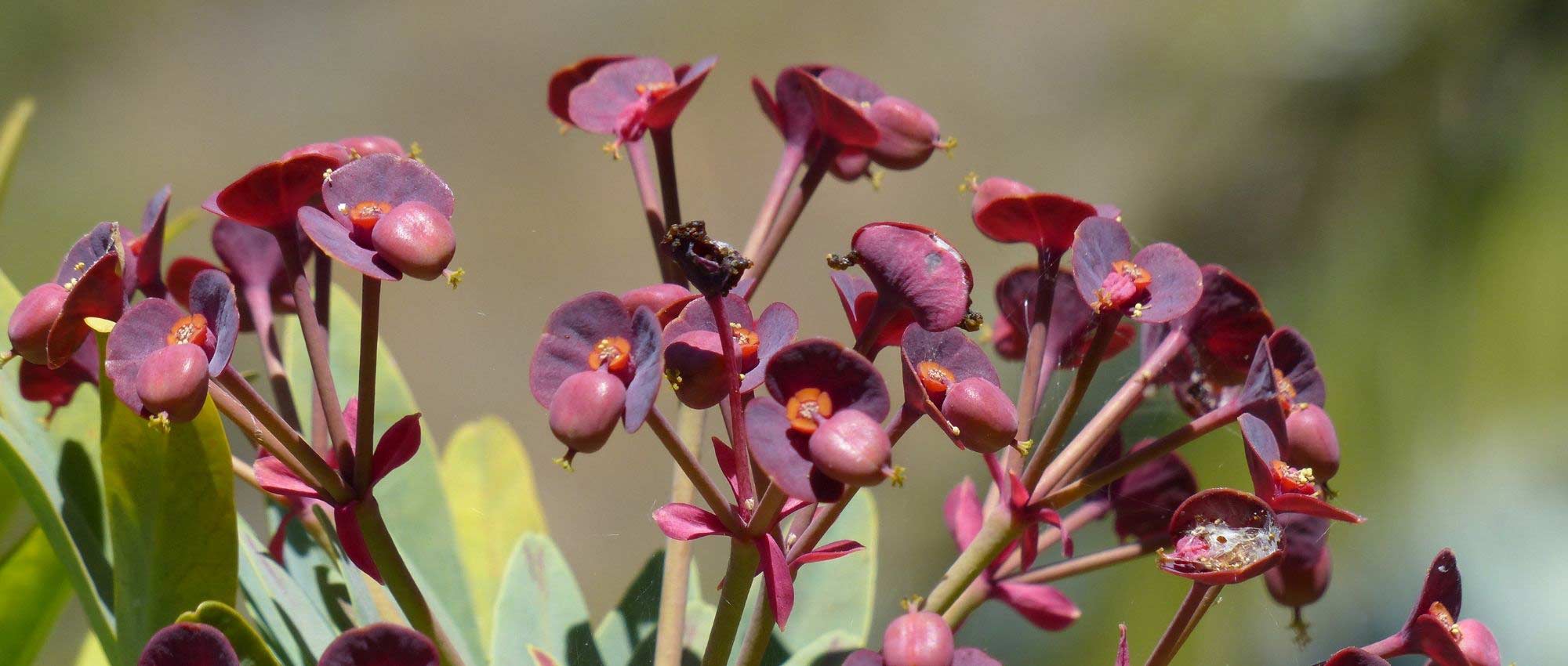
Euphorbias: 7 ideas for successful combinations
Plant pairings for all garden styles
Contents
Euphorbias are superb plants, mostly perennials, that often offer flowering in zesty hues and decorative foliage.
There is an extraordinary diversity! They have a style of their own and stand out from other perennials by an exotic, original appearance. They are fairly architectural and striking plants. Some have coloured foliage — deep purple, bluish, or variegated. Most thrive in warm, dry conditions, although there are also species that prefer cool shade. They generally require little maintenance, proving fairly drought-resistant, hardy, and suited to rather poor soils.
Discover our ideas and inspiration for combining euphorbias in the garden and creating stunning borders!
In an exotic border
Some euphorbias are perfect for creating an exotic atmosphere. This is particularly true of the Euphorbia characias, which bears upright stems topped by large yellow-green inflorescences. It is prized for its graphic, original habit. You can pair it with superb flowering of wallflowers (for example Erysimum cheirii ‘Orange Bedder’). Also take advantage of decorative, exotic leaves of the castor oil plant, phormiums and colocasias (including the superb dark-leaved variety, ‘Black Magic’)… For extra height, plant palms and banana plants at the back of the border. You will achieve a truly exotic feel! Another euphorbia that will fit easily into this type of garden is Euphorbia griffithii (‘Fireglow’ or ‘Dixter’), whose flowering takes on beautiful orange hues.
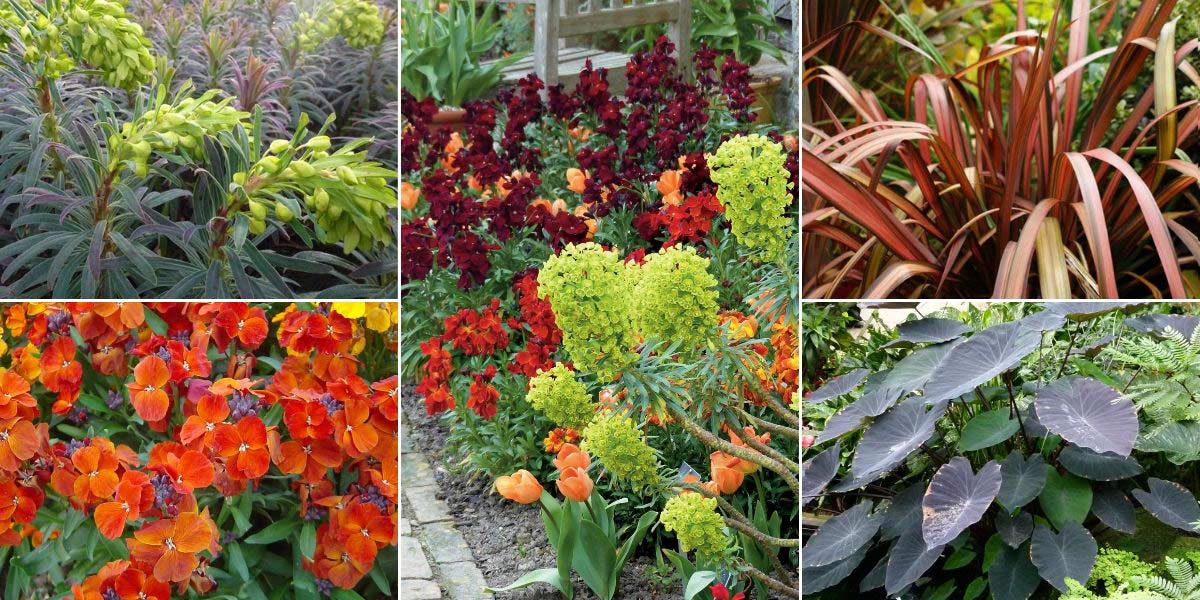
Euphorbia characias ‘Purple and Gold’ / Erysimum cheiri ‘Orange Bedder’ / scene with Euphorbia characias ‘Wulfenii’, tulips and wallflower ‘Bedder Scarlet Vulcan Brune’ / Phormium ‘Pink Panther’ / Colocasia ‘Black Magic’
In rockeries or dry gardens
Adapted to full sun and drought, euphorbias easily find their place in a rockery or a dry garden. For this use, we particularly recommend Corsican spurge (Euphorbia myrsinites) with its beautiful blue-grey foliage. You can create a striking scene by pairing it with the silver foliage of Verbascum ‘Polarsommer’, Eryngiums, Stipas, and Salvia nemorosa ‘Caradonna’. You will obtain a superb planting in blue-grey tones, contrasted by yellow flowering of euphorbia and Verbascum.
In a similar style, pair Euphorbia ‘Blue Haze’ with the delicate flowering of Gaura lindheimeri and Salvia microphylla ‘Cero Potosi’, whose pink flowers add small touches of bright colour. These euphorbias also combine very well with succulents, agaves, sedums and Opuntia… You can add other small perennials with tapetum habit: Phlox subulata, Delosperma cooperi, Arabis caucasica… In this type of garden, if you live in regions with very mild climate, it is also possible to choose succulent euphorbias, which resemble cacti.
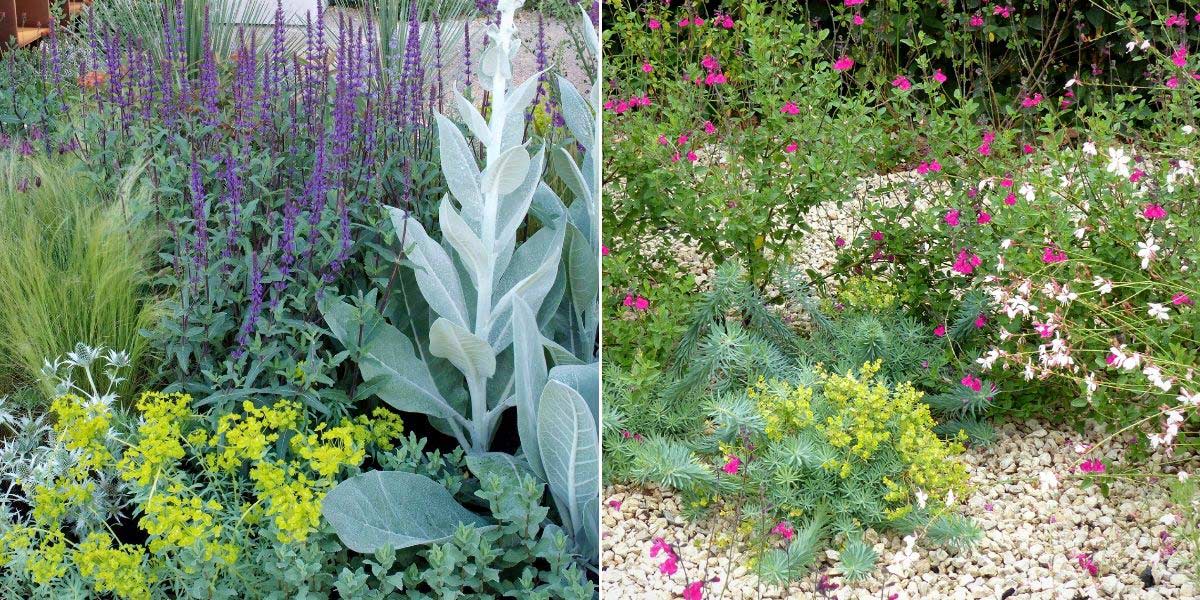
Scene with Verbascum ‘Polarsommer’, Salvia nemorosa ‘Caradonna’ and Euphorbia mysinites (photo Nathalie Pasquel – MAP) / Scene with Euphorbia ‘Blue Haze’, Gaura lindheimeri and Salvia microphylla ‘Cero Potosi’
Discover other Euphorbia - Spurge
View all →Available in 1 sizes
Available in 4 sizes
Available in 1 sizes
Available in 1 sizes
Available in 1 sizes
Available in 1 sizes
Available in 1 sizes
Available in 1 sizes
Available in 1 sizes
Available in 1 sizes
In a naturalistic border
Euphorbias easily find their place in a bed with a very natural, wild style. Feel free to pair the luminous flowers of the Euphorbia schillingii with the yellow‑orange flowering of an Achillea, which you can set off with the purple flowers of a Cosmos and an Astrantia. These flowerings are very light and create a free, natural, airy effect. You can also pair the Euphorbia cyparissias ‘Fens Ruby’ with the flowering of feverfew Tanacetum parthenium ‘Aureum’ and the foliage of Stachys byzantina. Finally, the annual Euphorbia ‘Diamond Frost’ can also find a place here for its small, very delicate white flowers that bring lightness to borders.
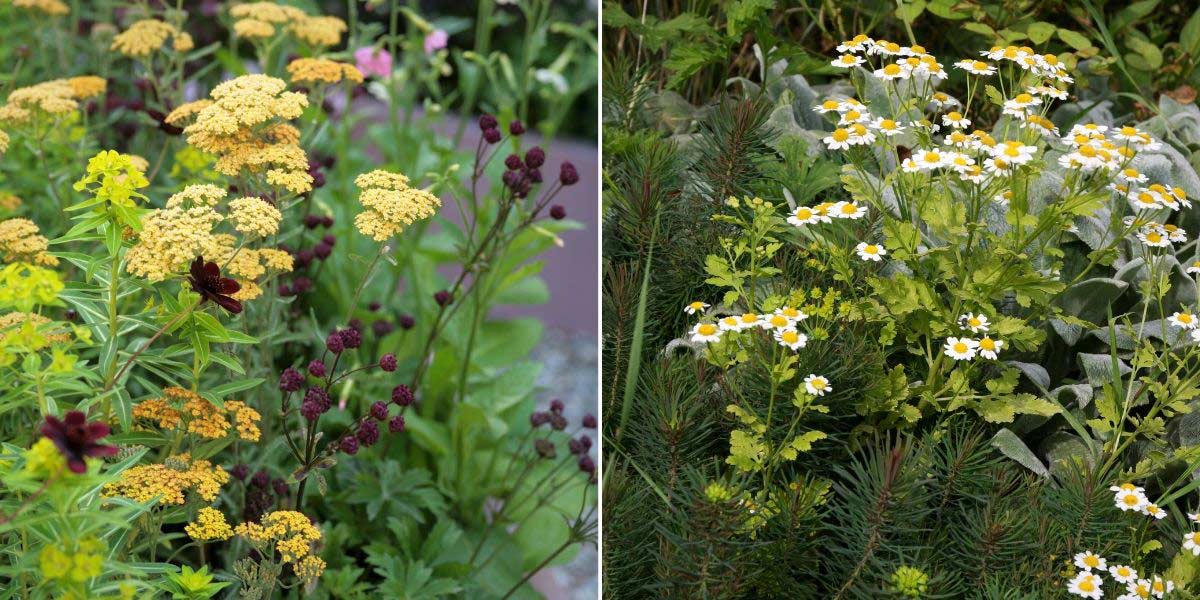
Scene with Euphorbia schillingii, Astrantia, Cosmos and Achillea / Euphorbia cyparissias ‘Fens Ruby’, feverfew Tanacetum parthenium ‘Aureum’ and Stachys byzantina (photo Virginie Douce)
For a border in warm hues
Some euphorbias stand out for their warm colours. This is notably the case for Euphorbia griffithii ‘Fireglow’ or ‘Dixter’, ideal with the colourful flowering of tulips. You can plant it in companion with tulip ‘Orange Emperor’. Also enjoy Euphorbia polychroma, whose flowers take on a lovely yellow hue. Ideal for accompanying tulip ‘West Point’. You will achieve a very bright effect! You can associate these euphorbias with other perennials, such as Alyssum saxatile, Geum or primroses. In autumn, Euphorbia griffithii will be superb to accompany autumn foliage (maples, sumac, dogwoods, Geranium sanguineum…), grasses, asters and dahlias…

Tulip ‘Orange Emperor’ and Euphorbia griffithi (photo Jenny_Lilly – Garden World Images – Biosphoto) / Euphorbia griffithii ‘Dixter’ / Tulip ‘West Point’ and Euphorbia polychroma (photo Andrew Lawson – Biosphoto – Garden Collection)
To add lightness to a composition!
Discover Annual Euphorbia ‘Diamond Frost’, very different from other euphorbias. Its tiny white flowers lighten compositions, alongside more impressive, colourful flowers. Thus, it pairs wonderfully with begonias, hybrid verbenas, petunias, Calibrachoa… This euphorbia is the little extra touch that will really showcase these colourful flowering displays, adding a pleasant airy effect. It is also ideal with decorative foliage of Coleus. It will lighten your arrangement with its small, very delicate white flowers. You can create contrasts with darker foliage of heucheras or ivy.
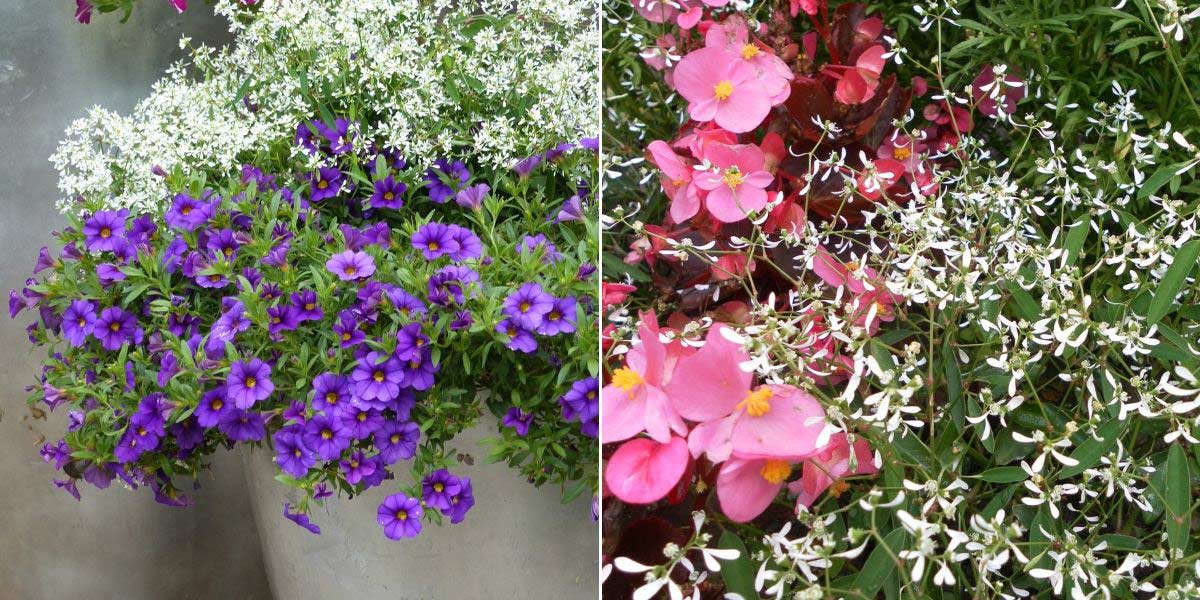
Euphorbia ‘Diamond Frost’ and Calibrachoa ‘Unique Blue Violet’ / Euphorbia ‘Diamond Frost’ and Begonia
For a beautiful woodland scene
Unlike most euphorbias, Euphorbia amygdaloides particularly appreciates shady spots. With its natural, slightly wild habit, it is perfect for dressing the bases of trees and bushes or for enhancing a woodland garden, with, for example, ramsons and daffodils… Pair these plants with the delicate blue bell-shaped flowering of the bluebell (Hyacinthoides non-scripta) and add decorative foliage such as ferns, hostas or Brunnera.
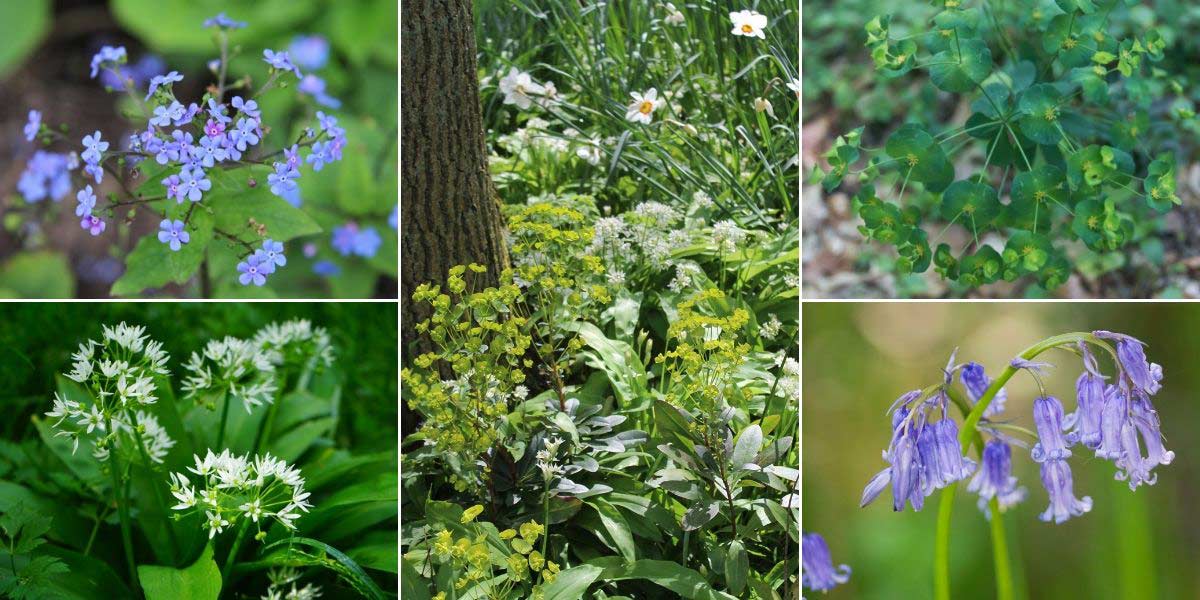
Brunnera macrophylla / Allium ursinum / scene with Euphorbia amygdaloides var. robbiae, Allium ursinum and daffodils / Euphorbia amygdaloides (Daniel Villafruela) / bluebell, Hyacinthoides non-scripta (photo Olivier Pichard)
To brighten a border or create contrasts!
Choose variegated euphorbias, such as Euphorbia ‘Tasmanian Tiger’ or Euphorbia ‘Glacier Blue’, which bear long leaves marginate with white or cream-coloured. Pair them with darker foliage, such as that of Ophiopogon planiscapus ‘Nigrescens’ or some heucheras, such as variety ‘Obsidian’. Also take advantage of the very dark, purplish foliage of a sedum (for example ‘Dark Magic’ or ‘Orange Xenox’), Ajuga reptans ‘Atropurpurea’ or Pennisetum ‘Rubrum’. This will create a striking contrast that will really highlight the light tones of the euphorbia.
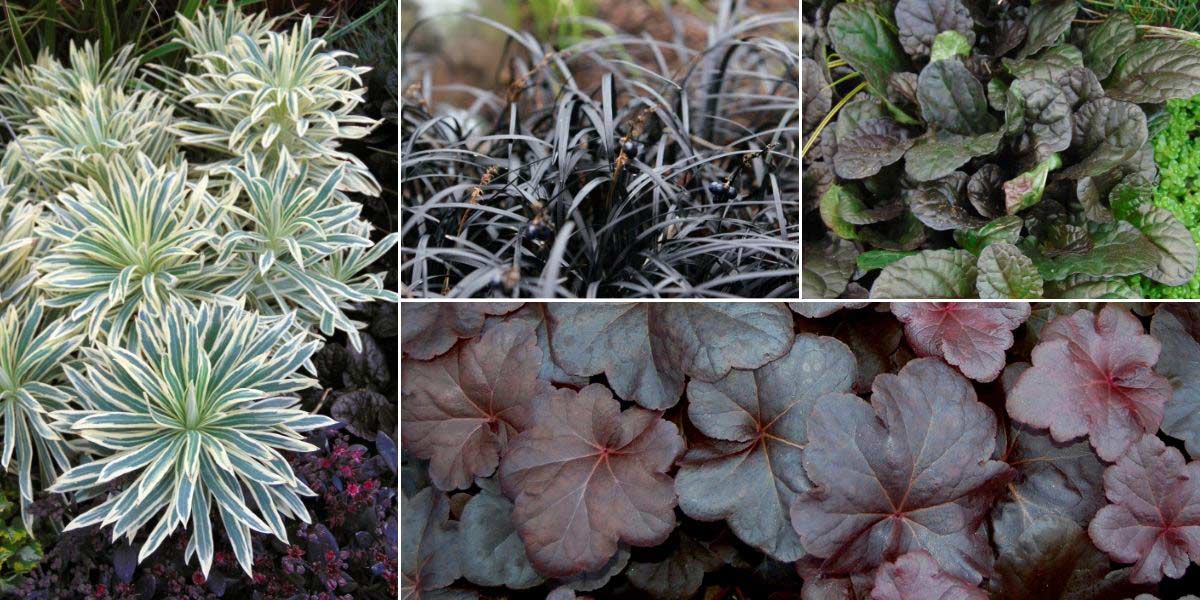
Euphorbia characias ‘Tasmanian Tiger’ / Ophiopogon planiscapus ‘Nigrescens’ (photo brewbooks) / Ajuga reptans ‘Black Scallop’ / Heuchera ‘Obsidian’
- Subscribe!
- Contents
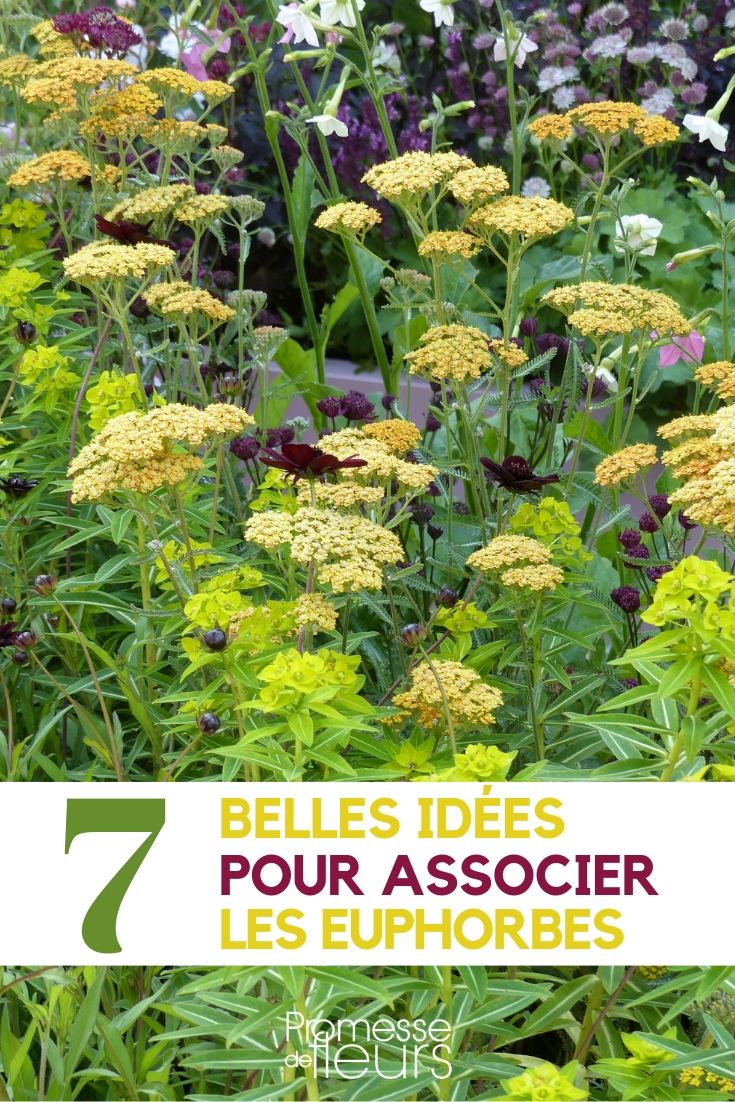































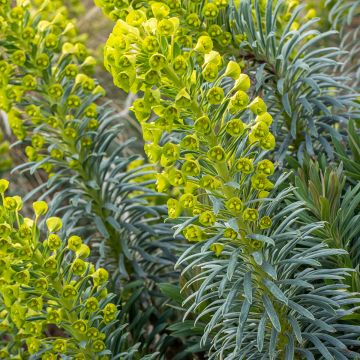
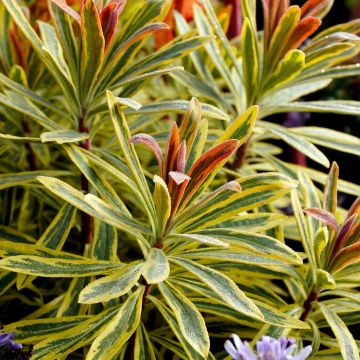
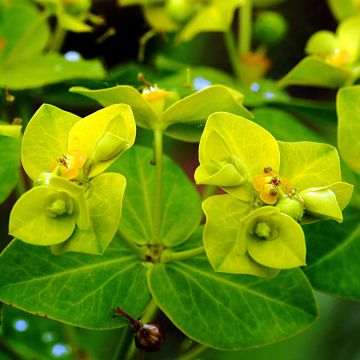
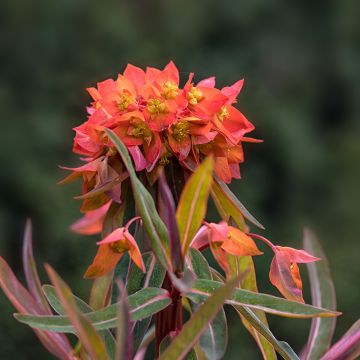
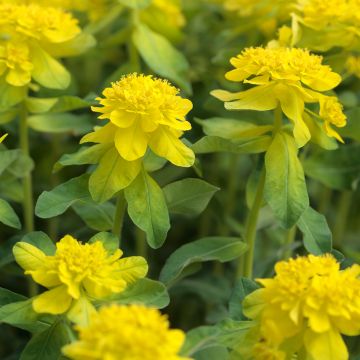
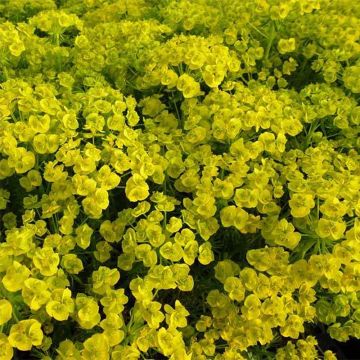
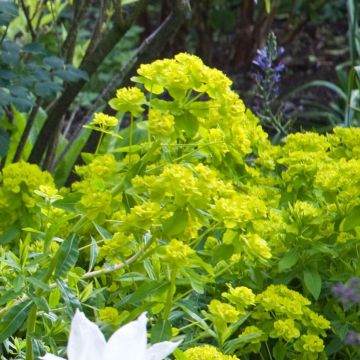
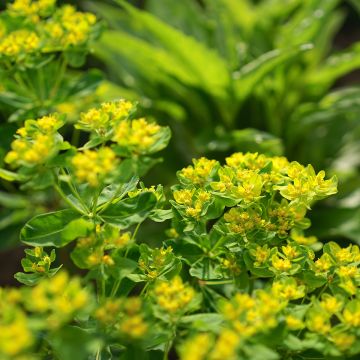
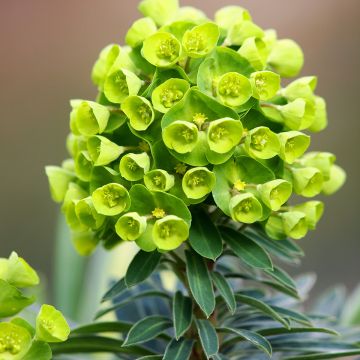
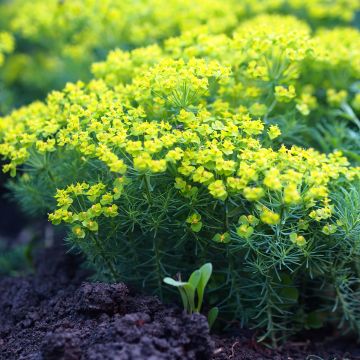
Comments